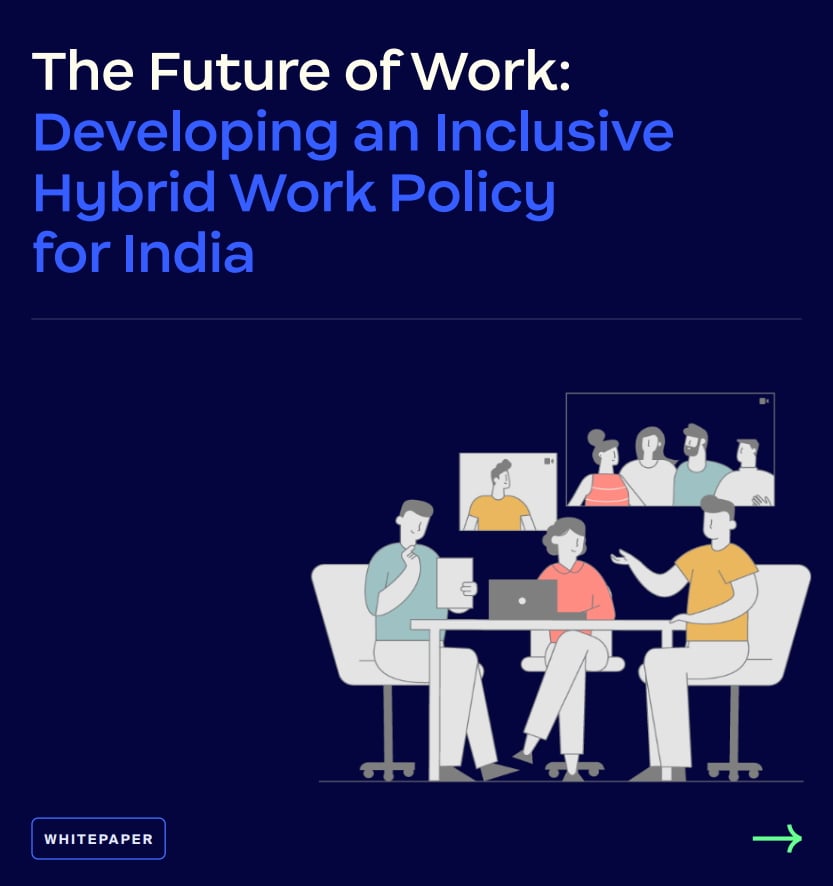Published: December, 2022
The COVID-19 pandemic ushered in some permanent changes in the way we work. With the outbreak of the pandemic, public health measures such as lockdowns became mandatory across the world, with over 90 countries imposing such measures by April 2020. Overnight, diverse sectors such as healthcare, education, business, government, and more had to find new ways to function while adhering to changing guidelines. It was information and communication technologies (ICTs) — such as video communications — that became the bulwark of our defense at this time, allowing economic activity to continue and helping employees work from the safety of their homes.
While it was the pandemic that led to the large-scale adoption of ‘teleworking’ models across sectors, the experience of working online through 2020 and 2021 gave employees the appetite and interest in continuing such models in the long-term. Today, many employers continue to offer teleworking options to employees.
This includes policies specifying job roles or teams that can work remotely, or others that require employees to work on-site only on certain days. Hybrid work — a mix of on-site and off-site workstyles — offers employees much flexibility in deciding their workstyle, with initial surveys showing that many employees value this flexibility. Data from job portals also shows that the number of searches for flexible work options has dramatically increased in recent times.
Over the past two years, there has been a decisive shift in expectations in the workforce. As a result, hybrid work arrangements, in some form or the other, are likely to persist well after the pandemic. Besides offering flexibility to employees, hybrid work allows employers to tap better talent, and enhance productivity. It could, with the right policies, help address socio-economic issues such as women’s labor force participation, access for disabled employees, as well as regional inequalities in economic development. However, there are certain safeguards needed for effective hybrid working too. These include reducing friction in the regulatory framework — particularly diverse labor laws that are yet to be updated to regulate the changing nature of work, issues such as ‘moonlighting’ and lack of access to suitable work environments in India’s multi-generational households, negative effects on work-life balance, data security and employee privacy concerns, and the extra burden of care work on women employees.
To minimize the risks posed to employers and employees, public policies and programs that support the uptake of hybrid work models will be crucial. To enable a fair and inclusive transition, governments and workplaces must balance workers’ needs with organizational and financial concerns. The government, in particular, could also proactively develop policies to support hybrid work, considering the potential benefits that such a shift might entail. As the definition of a workplace evolves, such interventions can help facilitate wider workforce participation and minimize implementation challenges, while making sure that employees working remotely get similar legal protections as their counterparts working onsite.
Internationally, many countries have already instituted policies and put their weight behind programs that encourage the transition. These include measures such as creation of well-equipped co-working hubs, tax exemptions, and a change in labor laws, including the rights of employees to disconnect after their agreed working hours. Besides these, India will also need to bolster its internet infrastructure so that ICT tools can work seamlessly across geographical boundaries.
It is in the above context that the team at TQH worked with Zoom India to put together this whitepaper to provide an overview of the emerging evidence on hybrid work in India, while identifying challenges affecting employees and employers. The whitepaper also looks at promising international practices aimed at facilitating hybrid work and provides recommendations that can help unlock its true potential for a productive and inclusive work environment in the country.

